Spring Country Walk
Where is spring but where is spring?
Spring is here!
When the woods and oak groves are covered with leaves of tender colors,
In the orchards and meadows appear greenery and flowers,
When the birds that were sad are happy under the foliage,
I too sing and exult, I bloom again, become green again, ageless.
When the flower appears among the green foliage, I see the weather clear and serene,
When the sweet song of birds in the wood soothes my sorrowing heart,
Since the birds sing in their own way, I must walk proudly,
I have so much love in my heart that frost seems to me like flower and snow like greenery.
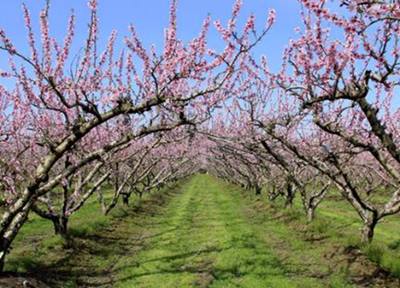
Its bulb contains galantamine causing abdominal pain if ingested,
But very useful in medicine for the treatment of Alzheimer's disease which blunts,
This delicate yellow flower is unfortunately threatened by profuse picking,
But also by the excessive use of fertilizers or early mowing which weakens regrowth.
Originally from China, this small, vigorous fruit tree has a lofty rounded crown,
Its early and decorative flowering makes it very sensitive to spring frosts,
After flowering these leaves are glossy and shiny, with an almandine petiole,
A fan of the sun, the south-facing apricot tree will thrive in a sheltered corner of the garden.
Its globular, round drupe, with velvety skin, orange-yellow in color,
Has a slightly marked median groove allowing it to be opened easily,
Providing delicious jams or tarts, it will appeal to the most gourmands,
The apricot is the symbol of sweetness, passion and sensuality.
It is often found on rosehips in its disheveled formation,
Spectacular in the fall, it is the best known of the galls, Bédégar called,
In the spring a female came to lay eggs in a leaf bud,
Within a few weeks the cells proliferated around each egg in the nursery.
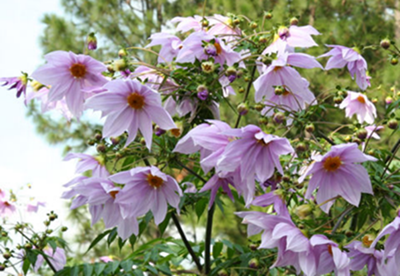
One of the largest of its kind emerging from the ground around May, reaching a height of 12 feet,
The dahlia imperialis balances its flowers at the top of the long crown stems,
From the Asteraceae family, it is a flower head composed of numerous supply florets,
On the outskirts, other ray flowers, simulating petals, serve as markers for pollinators.
It is found on the banks of watercourses, in ditches and damp meadows,
In the mountains, it is found in megaphorbiaia, associated with willow herb and nettle,
It is its fluted and reddish stem with its haughty appearance which has earned it the name meadowsweet,
Its leaves, dark green in color, are glabrous above, with their felted white down below.
Its flowers, ivory-white in color and very fragrant, are grouped in corymbs,
The fruits are spiral and striated achenes, hence its name spirea,
By crushing the flowers and leaves we extract a synthetic molecule which provides aspirin,
The flowering tops are used as an infusion for their divine diuretic and digestive properties.
Graceful insect, with transparent wings, with its golden and shining eyes,
She is nicknamed the “young lady with golden eyes”, she is a lion in the garden,
The green lacewing, devouring aphids, feeds on nectar, honeydew and pollen,
A fantastic biological aid, it swallows 500 aphids during its development.
Earthworms or earthworms are the most important inhabitants of the land,
They do not eat the plants, through the soil they literally “eat” their way,
They participate in its aeration and reject their excrement in the form of castings or twists,
On a single hectare of meadow, they can mix up to 600 tons of earth per year.
Like thousands of suns, your little sessile balls on your branches all in green,
Golden pompoms, puffs of chick's down, in small bouquets are going to conquer winter,
Mimosa in your yellow polka dot suit, your flowery canopy sometimes, at the end of January,
Like sparkling cotton balls, your golden clusters make our vacationer dreams bloom.
Like thousands of suns, your numerous little sessile balls on your branches all in green,
Golden pompoms, puffs of chick's down, in small bouquets are going to conquer winter,
Mimosa in your yellow polka dot suit, your flowery canopy sometimes, at the end of January,
Like sparkling cotton balls, your golden clusters make our vacationer dreams bloom.
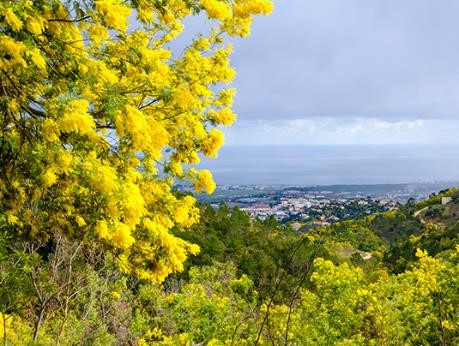
A vapor, a fog, a cloud surrounded me,
Out of winter on a mountain of light yellow blazed,
A tower of flowers, waterfall, cataract, appeared on the path,
Earthly sun, explosion of perfume, it was a divine mimosa.
Enhanced by the shine of its labile scales in all the gleaming splendor of its youth,
Amanita muscaria with its white blades, grows near birches, very slender,
The Caesar amanita, classified as excellent edible, has a vibrant yellow-orange color,
Responsible for the so-called muscarin syndrome, its false sister is considered toxic.
Of a beautiful purplish blue, periwinkle blue, it likes cool undergrowth and hedges,
The flowers of the cute periwinkle produce nectar collected by bees,
But only once the big bumblebees have pierced the tough corolla,
Called witches' violet, it was known for its medicinal properties since the Middle Ages.
This little blue periwinkle takes its nobility from Madame de Sévigné,
She recommended it to her daughter, Mme de Grignan, to treat a lung condition,
Containing vincamine the little periwinkle, as a vasodilator is also used,
Promoting cerebral circulation, it fights against the mental aging of future centenarians.
With its bright yellow, its luminous star-shaped flowers appear glazed,
The leafwort has a rosette of bright green leaves in the shape of an upside-down heart,
From the end of spring, scratch the soil a little, you will come across a “hair” of roots,
Resembling hemorrhoids, it has been used against this malignant condition since the Middle Ages.
In Greek mythology she played a beautiful young man loved by Apolon and Zephyr,
Its magnificent funnel-shaped blue-mauve petals admire the ground at the edge of the forest,
The bluebell stands out for its magnificent carpets exuding a secret perfume,
The nodding squill, a beautiful sciaphile wildling, swings its clusters according to the weather and the zephyr.
With its bright red mask, highlighted by a black line around the sting beak,
This splendid sparrow, looking like a dandy, constantly defies the thistles,
With its slender beak, it extracts the seeds of teasels, burdocks and cirsuses in a thrust,
The goldfinch with its shimmering appearance charms with its bewitching song interspersed with rolls.
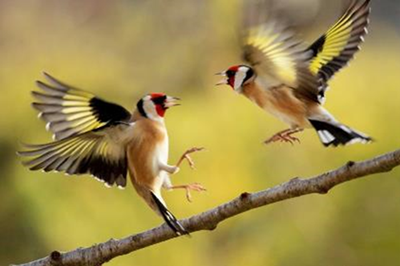
In March, it puffs out its chest, spreads its wings showing off its beautiful yellow color of charm,
After laying 4 eggs, light blue speckled with brown, he will ensure the supply of his lady,
From the moment they are born, the chicks are force-fed a mixture of insects and fickle aphids,
Shamefully hunted with glue by poachers, his virtuoso recital sometimes ends up in a cage!
In the trees it sings, on the ground it coos and it even somersaults,
The mating season begins, a blue sparrow hops flexibly,
This little bird, a precious garden helper, is capable of many feats,
It is in groves, orchards and gardens that the friendly blue tit lives.
Not very shy and constantly on the move, she visits the feeders with covetousness,
Its cobalt blue cap, wings and tail have given it its qualification as exquisite,
Despite its green-yellow back, belly and rump,
Madame building the nest in the first days of Spring which reigns.
Between moss and twig she lays around ten eggs speckled with red spots,
She will cover them for a fortnight, Mr ensuring his sweetheart's supplies,
The couple will take turns feeding their brood with Lepidoptera caterpillars,
Aphids and seeds will complete the diet of baby birds fed with a protocol meal.

After three weeks in the nest, they will go from branch to branch in small leaps,
Then through short flights they will emancipate themselves for their first initiation flight,
Autonomous in one month, at the age of one year they will be independent, ready for dispersion,
And here they are gone for around ten years, if Mother Nature lends them a wandering life.
“There is joy, hello, hello swallows” sang Charles Trenet,
Easy to identify by its metallic blue back and immaculate white belly,
The barn swallow is back and once again occupies our starry airspace,
A tireless mason, using balls of mud and straw she builds her cozy nest.
With a large head and very small ears, it is a large rodent with ruffled brown fur,
Its scaly tail is long and cylindrical, its rear legs are partly webbed,
It likes slow-moving waterways, stagnant waters, lagoons, estuaries and marshes,
The coypu has the unfortunate habit of digging burrows in the banks which are then weakened.
He is a vegetarian who does not disdain corn or wheat, but feeds on reeds and rushes,
Originally from South America, introduced to Europe in the 19th century. for the exploitation of its fur,
The farms grew but the crisis of 1929 ruined the breeders who released them into the wild,
Classified as the most harmful invasive exotic species in Europe, studies aim to limit its proliferation.
The blue argus, or common azure, sails fluttering through wastelands and gardens,
The male can be recognized by his iridescent blue upper wings,
While in the female it is brown, set with grenadine red dots,
Both flying over the mustard yellow rapeseed coloring the cultivated areas.
The caterpillar, small and stocky, is capable of overwintering in a very original way,
After about twenty days, stuffed with its host plant, it drops to the ground,
It attracts ants by producing a honeydew with an odor identical to that of their ordinary larvae,
Like a true “pacha”, it is fed in the anthill where pupation will take place, before taking off.
On the edge of high paths, on mountainous rocks, in mountain pastures,
At the edge of torrents, close to screes, the edelweiss offers its image,
We must protect the little snow star from men,
Fragile treasure that watches over the mountain, its survival is a spell.
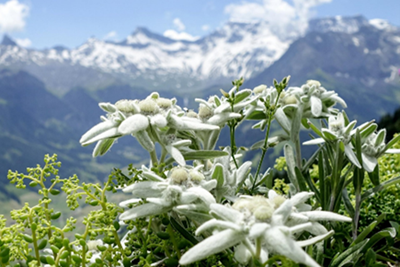
Little star with milky and silver velvet,
This protected flower is worth it, ivory and muted,
A heavy price must be paid to win it,
In inaccessible places, it loves to nestle.
This fluffy sun is to the mountains what water is to life,
The edelweiss asleep under the snow, superb nugget, beautiful like a treasure,
In spring will offer in arpeggio, its note of warmth in its marvelous decor,
Noble star with cottony velvet, you will remain immortal at all times.
Guy l’ARIÉ…..JOIE
